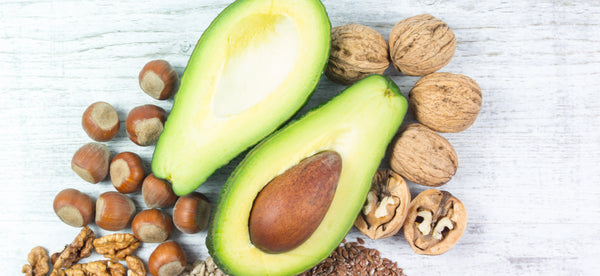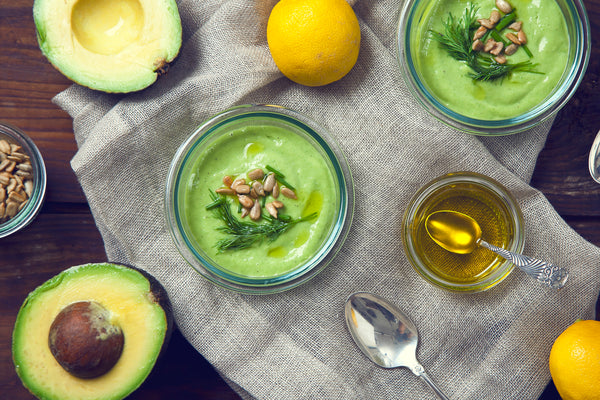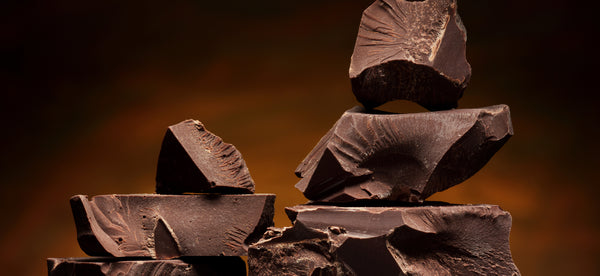

8 PLANT-BASED PROTEINS FOR VIBRANT HEALTH
March 18, 2019
by Renee Tavoularis
Protein is a macronutrient that’s found in every cell of the body—this is what helps build and repair skin, blood, muscle, bone, and internal organs. When designing your plate, it’s best to include a variety of balanced and plant-powered proteins to feel energized, satiated, and strong.
Well Within Beauty shares everything you need to know about protein, plus the top 8 plant-based protein sources (with must-try recipes).
COMPLETE VS. INCOMPLETE PROTEINS
Protein consists of 20 different compounds called amino acids. However, our bodies only produce 11 of these amino acids, so we must get the remaining nine “essential” ones from foods. A complete protein is considered that which contains all nine essential amino acids. It’s not necessary to only consume complete proteins—you can mix and match different proteins to get your complete intake.
HOW MUCH PROTEIN DO WE NEED?
The fact that every cell in the body contains protein underscores its importance. But like anything, too much of a good thing can be bad for your health. Studies show connections between elevated protein and rates of chronic disease.
Generally, the recommendation is about .36 grams of protein for every pound of weight. If you weigh 150 pounds, you would need about 54 grams of protein daily—about 25% more if you are pregnant or lactating, or training to build muscle.
6 COMPLETE PLANT-BASED PROTEIN SOURCES
HEMP
These nutty-tasting and nutrient-dense seeds derive from the hemp plant. Hemp boosts the flavor and health benefits of your meals and sides.
- 3 tablespoons equal one serving, with 10 grams of protein.
- Hemp is rich in fiber. It contains omega-3 and omega-6 fats, as well as magnesium, phosphorus, and iron. This seed is excellent for skin health, as it may help reduce inflammation and ease skin irritations.
- Hemp is easily integrated into whatever you’re eating. Scoop a few tablespoons of raw hemp seeds into smoothies, sprinkle onto vegetables, or add to your morning oats. For a decadent treat, try Well Within Beauty’s Blackberry Peach Crisp recipe.
PUMPKIN SEEDS
Scoop out the insides of a pumpkin and you’ll find its seeds—a go-to complete source of plant-based protein.
- A quarter-cup serving contains 7 grams of protein.
- In addition to their protein content, pumpkin seeds contain manganese, phosphorus, and magnesium. They’re also anti-viral, anti-fungal, and anti-bacterial—great for staving off germs!
- If you don’t want to extract the seeds from the pumpkin (a fun but messy undertaking), buy whole, raw seeds at the grocery store. You can enjoy as nature made them, add some to a trail mix, or roast with olive oil and salt in a 325°F oven for about 20 minutes or until golden. Try Well Within Beauty’s Curried Pumpkin Seed Trail Mix recipe.
AMARANTH
Gaining recent popularity for its health benefits, this nutty gluten-free grain has been cultivated for thousands of years. Its leaf is used in medicine, and the grain in food.
- A quarter-cup serving contains 8 grams of protein.
- In addition to its benefits as a complete protein, amaranth contains a litany of vital nutrients, including magnesium, manganese, phosphorus, iron, selenium, copper, and even calcium. It’s also a great source of fiber for digestive health, and helps with inflammation, cholesterol levels, and bone health.
- Amaranth is often combined with other grains or added to dishes like soups, stews, and casseroles. Amaranth also comes in flour form for use in gluten-free recipes, such as Well Within Beauty’s Orange Rosemary Amaranth Scones.
QUINOA
A prized member of the Amaranthaceae family, quinoa is related to Swiss chard, beets, and yes, amaranth.
- A quarter-cup serving contains 6 grams of protein.
- Quinoa contains prebiotics (indigestible fibers) that support gut health. This complete protein is gluten-free and a good source of manganese, magnesium, and iron.
- Add 1¾ to 2 cups of water to 1 cup of dried quinoa, and simmer for 15-20 minutes. Explore seasonal quinoa salads and grain bowls to make colorful and wholesome meals and sides. For a savory option, try Well Within Beauty’s Grilled Eggplant with Herbed Quinoa & Cumin Tahini Dressing.
BUCKWHEAT
Also known as kasha, buckwheat has a stronger taste than other plant-based proteins. Sold as groats, flour, or cereal, this complete protein is related to sorrel and rhubarb.
- A quarter cup of unprepared buckwheat groats contains 5 grams of protein.
- Buckwheat is grain- and gluten-free; good news for those on autoimmune and allergy-friendly diets. However, it does contain a similar nutrient profile to other grains, with minerals like manganese, copper, and magnesium. It’s also high in fiber and phytonutrients.
- Add a 2-to-1 ratio of water to buckwheat, and simmer for 20-30 minutes. For pilaf, replace the water with vegetable broth, and toss the cooked buckwheat with some fresh herbs. You can also add it to green salads for extra nutrition. For a yummy kickstart to your day, discover Well Within Beauty’s Buckwheat Banana Pancakes.
TEMPEH
This versatile fermented soybean product originated in Indonesia, but is becoming a popular part of a healthy Western diet.
- A 3-ounce piece of tempeh contains 13 grams of protein.
- In addition to its exceptional protein content, this dense and chewy product contains B complex vitamins, manganese, phosphorus, magnesium, and copper. Additionally, as a probiotic, tempeh promotes digestive health.
- Although tempeh is denser and chewier than tofu, tempeh is prepared much the same. It can be baked, fried, marinated, or sautéed to take on the flavor of the ingredients it’s being cooked with. Tempeh can also be crumbled down like ground meat and added to any dish. Check out Well Within Beauty’s recipe for Crispy Tempeh & Brussel Sprout Skillet.
2 INCOMPLETE PLANT-BASED PROTEIN SOURCES (AND HOW TO MAKE THEM COMPLETE!)
LENTILS
Available in many varieties and colors, these filling legumes can be used in soups, hot or cold salads, or countless sides.
- A quarter cup of dried red lentils contains a whopping 13 grams of protein and brown lentils contain 11 grams. To make a lentil dish a complete protein, serve it with brown rice.
- Lentils contain iron, folate, copper, phosphorus and manganese, and are very rich in fiber for digestive health.
- There’s no need to soak lentils before cooking; just rinse to remove debris. Simmer brown and green lentils for about 20-30 minutes. Red lentils will also cook in about 20-30 minutes. Enjoy brown lentils in Well Within Beauty’s Classic Italian Meatballs recipe.
LEGUMES
While we’ll focus our attention on beans, this broad category encompasses beans (kidney, navy, garbanzo), peanuts, green peas, alfalfa, and lentils.
- A quarter cup of dried kidney beans contains 9 grams of protein. Comparatively, a half cup of canned kidney beans contains 8 grams of protein. To make a legume dish a complete protein, serve it with whole grains such as whole-wheat pasta.
- Legumes are nutrient-dense and usually rich in dietary fiber. Garbanzo beans (chickpeas), for example, also contain vitamin K, folate, phosphorus, zinc, copper, manganese, choline, selenium, iron, vitamin B6, and magnesium.
- Rinse canned beans to remove any excess sodium. Dried beans should be soaked for at least several hours to speed cooking time, then cooked in clean water for about an hour (time will vary). Beans can then be leveraged in endless ways: from chili to soups and stews, to hummus and dips, to salads and even desserts. For a unique twist on legumes, try Well Within Beauty’s Chinese Chickpea Salad.
Printer
Friendly
Also in Volume 80
 NUTRITION
NUTRITION
Dietary fat: is it good or bad? Both. You see, not all fats are created equal.
READ MORE
 RECIPES: VEGAN OTHERS
RECIPES: VEGAN OTHERS
Finding inspiration when cooking vegan meals isn't as difficult as people might think. Here's an exciting recipe for Avocado Dip.
READ MORE
 NUTRITION
NUTRITION
Chocolate is the only ingredient that is its very own food group. Well not really—but it seems as if it should be.
READ MORE



 NUTRITION
NUTRITION
 RECIPES: VEGAN OTHERS
RECIPES: VEGAN OTHERS
 NUTRITION
NUTRITION
Leave a comment
Comments will be reviewed prior to posting.